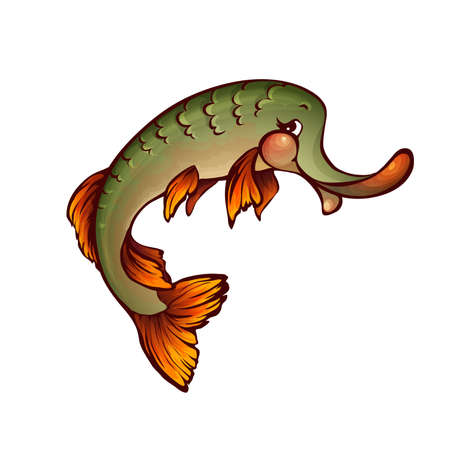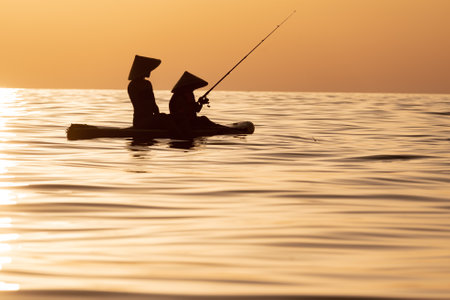1. Why Crappie Fishing at Night Works
Crappie fishing after dark is a favorite among many anglers across the U.S., and for good reason. These fish behave differently at night, and understanding their nighttime habits can give you a serious edge on the water.
Understanding Crappie Behavior After Dark
Crappie are known to be more active during low-light conditions. As the sun sets and temperatures drop, crappie leave their daytime hiding spots and move into shallower waters to feed. This makes them easier to locate and catch compared to daytime when they tend to stay deeper or in heavy cover.
Why Are Crappie More Active at Night?
- Cooler Water Temps: In warmer months, nighttime offers cooler water temperatures that encourage crappie to feed more aggressively.
- Reduced Light: Lower visibility gives crappie an advantage over prey like minnows and small insects, making hunting easier for them.
- Less Boat Traffic: With fewer boats on the water, crappie feel safer moving into open areas closer to shore.
Night Fishing Advantages Over Daytime Angling
Fishing at night doesn’t just benefit the fish—it also benefits you as an angler. Heres a quick breakdown of why night fishing might become your new go-to strategy:
| Advantage | Description |
|---|---|
| Less Competition | You’ll have more space on lakes and rivers with fewer anglers around. |
| Bigger Fish | Larger crappie often feed more confidently at night, increasing your chances of a trophy catch. |
| Milder Conditions | Nights are cooler and more comfortable, especially in summer months. |
| Simplified Patterns | Crappie follow predictable feeding routes after dark, making them easier to target once you learn their behavior. |
Pro Tip:
If youre new to night fishing for crappie, start near docks, bridges, or shallow brush piles. Use lighting (like submersible green lights) to attract baitfish—and in turn, hungry crappie.
The more you understand how crappie behave when the sun goes down, the better prepared youll be to catch them consistently during those quiet nighttime hours.
2. Essential Lighting Equipment and Setup
When it comes to crappie fishing at night, having the right lighting setup is crucial—not just for visibility, but also for attracting baitfish, which in turn lure in crappie. Experienced anglers rely on a few key types of lighting to make their night fishing trips more successful. Heres a breakdown of the most commonly used lights and how to position them effectively.
Types of Lights Used by Night Crappie Anglers
| Type of Light | Description | Main Purpose |
|---|---|---|
| Submersible Green Lights | Waterproof LED lights that are dropped into the water | Attract plankton and baitfish, which bring in crappie |
| Headlamps | Wearable lights that allow hands-free operation | Helps with tying lines, baiting hooks, and navigating gear |
| Boat Lighting | Built-in or portable lights mounted around the boat | General visibility and safety for moving around the boat |
How to Set Up Your Lights for Maximum Effectiveness
Submersible Green Lights
These are your go-to lights when targeting crappie at night. Drop one or two submersible green lights into the water near your boat. Position them about 2 to 4 feet below the surface. Let them run for about 15–30 minutes; this gives time for plankton to gather, which draws in baitfish like shad or minnows. Crappie will follow shortly after.
Headlamps
A reliable headlamp should be part of every anglers gear. Choose one with adjustable brightness settings and a red light mode if possible—red light helps preserve your night vision while still letting you see what youre doing. Keep it on low when not actively working to avoid scaring away fish.
Boat Lighting
Your boat should have enough lighting to move safely without over-illuminating the area, which could spook fish. Use soft white LED strips or clamp-on lights around the deck or console area. Avoid shining these directly onto the water where youre fishing.
Pro Tip:
If youre bank fishing, you can still use submersible lights by casting them out with a float or attaching them to a weighted rig. Just be sure they stay submerged and steady in one spot.
A well-thought-out lighting setup not only helps you see better but turns your fishing spot into a magnet for crappie activity. Once you get your lights positioned correctly, youll often see baitfish circling within minutes—and when that happens, get ready for some action.

3. Proven Night Fishing Tactics
When it comes to crappie fishing at night, having a game plan makes all the difference. Crappie tend to behave differently after dark, so using the right techniques can help you catch more fish and enjoy a successful trip. Here are some proven tactics that anglers across the U.S. swear by.
Jigging Under the Lights
One of the most effective ways to catch crappie at night is by jigging near a light source. Whether youre using floating LED lights or submersible green lights, these attract baitfish, which in turn draw in hungry crappie. Use lightweight jigs in natural colors like shad or chartreuse, and bounce them gently in the water column where fish are schooling.
Tips for Successful Jigging:
- Use 1/16 oz or 1/32 oz jigs for better control.
- Try vertical jigging near structure like submerged trees or dock pilings.
- Vary your retrieval speed until you find what works best that night.
Using Live Minnows
Live minnows are a go-to bait for crappie, especially at night when their sense of sight is limited. Hook a minnow through the lips or behind the dorsal fin and suspend it under a bobber at varying depths. Let the minnow do the work — its movement will naturally attract nearby crappie.
Why Live Minnows Work:
- Their natural movement mimics injured baitfish.
- They produce vibrations in the water that crappie can sense.
- Theyre easy to use and effective even for beginners.
Stationary Fishing from Docks or Boats
Staying in one spot can be just as productive as moving around, especially if youre fishing near lighted docks or with underwater lights. Set up multiple rods with different baits at various depths to cover more water and increase your chances.
Best Practices for Stationary Fishing:
- Use rod holders to keep lines steady and hands free.
- Change bait positions every 20–30 minutes if theres no action.
- Avoid loud noises that could scare off nearby fish.
Adjusting Tactics Based on Conditions
Your approach should change depending on water temperature and moon phase. Crappie behavior is heavily influenced by these factors, so staying flexible is key.
| Condition | Tactic Adjustment |
|---|---|
| Cold Water (below 60°F) | Fish deeper; slow down your jigging presentation. |
| Warm Water (above 70°F) | Target shallow areas near vegetation; increase retrieval speed slightly. |
| Full Moon | Avoid overly bright lights; fish may scatter due to natural brightness. |
| No Moon (New Moon) | Use stronger artificial lighting to attract baitfish and crappie. |
The most successful night anglers are those who adapt to conditions and experiment with different techniques until they find what works. Whether youre jigging under a dock light or soaking live minnows near a brush pile, knowing how to tweak your strategy can make all the difference during those quiet nighttime hours on the water.
4. Best Locations for Night Crappie
Finding the right spot is half the battle when it comes to night crappie fishing. Crappie tend to school up in certain areas after dark, especially where they feel safe and have access to food. Here are some of the most productive locations you should target:
Docks with Lights
Lighted docks are prime spots for night fishing because the lights attract baitfish, which in turn bring in hungry crappie. Look for docks that have underwater green or white lights, or overhead lights that shine into the water. If you find one dock holding fish, there’s a good chance others nearby will too.
Brush Piles and Submerged Structure
Crappie love structure, and brush piles are one of their favorite hangouts. At night, they’ll often hold tight to these areas for cover while feeding on passing baitfish. Many lakes have man-made brush piles placed by local anglers or wildlife agencies—use your electronics to locate them.
Bridge Pilings
Bridges provide vertical structure and shade during the day, but at night they still serve as excellent ambush points for crappie. The concrete holds heat from the day, and pilings attract both baitfish and predators. Slowly work your bait around each piling to find active fish.
Using Electronics to Scout Hotspots
Modern fish finders and sonar units can be a game-changer when scouting nighttime crappie spots. Use side imaging to scan large areas quickly and down imaging to identify schools of fish or submerged cover like brush or rock piles. GPS waypoints let you mark successful spots so you can return again later.
Quick Tips for Using Electronics at Night
| Tool | How It Helps |
|---|---|
| Side Imaging | Covers wide areas to locate structure and schools of crappie |
| Down Imaging | Gives detailed view of whats directly below your boat |
| GPS Mapping | Saves productive spots for future trips |
| Sensitivity Settings | Adjust brightness and contrast for better visibility at night |
The key is to stay mobile until you find active fish. Don’t be afraid to try multiple spots throughout the evening—crappie behavior can change quickly once the sun goes down.
5. Safety Tips for Night Anglers
Fishing for crappie at night can be a peaceful and productive experience, but it also comes with unique risks. Staying safe while youre out on the water after dark is all about preparation and awareness. Here are some key safety tips every night angler should follow:
Boating Regulations You Should Know
Before heading out, make sure youre familiar with your states boating laws—especially those that apply to night operations. Many states require specific lighting and safety equipment after sunset. Check with your local Department of Natural Resources or Coast Guard office to stay compliant.
Always Wear a Life Jacket
This one is non-negotiable. Even if youre an experienced swimmer, wearing a U.S. Coast Guard-approved life jacket can save your life. At night, its harder for rescuers to locate someone in the water, and cold temperatures can quickly reduce your ability to swim.
Use Proper Navigation Lighting
Your boat must have functioning navigation lights if youre fishing at night. These include red and green sidelights and a white stern light. If you’re anchored or stationary while fishing, turn on your all-around white anchor light so other boats can see you.
| Light Type | Color | Purpose |
|---|---|---|
| Sidelights | Red (port), Green (starboard) | Makes your boat visible from the front/sides |
| Stern Light | White | Makes your boat visible from behind |
| Anchor Light | White (360°) | Used when stationary to alert others of your presence |
Stay Visible and Alert
Avoid accidents by making yourself as visible as possible. Wear reflective gear or use glow-in-the-dark accessories. Keep a flashlight or headlamp handy—not only to manage gear but also to signal others in case of emergency. Also, limit distractions and always keep an eye on your surroundings, especially for other boats.
Pro Tip:
If youre using green LED underwater lights to attract crappie, remember they help with visibility too—but don’t rely on them alone for safety.
Create a Float Plan
Tell someone where you’re going and when you expect to return. Include details like launch location, expected route, who’s going with you, and what type of boat you’re using. It’s a small step that can make a big difference in an emergency.
A Few More Quick Tips:
- Keep your phone charged and in a waterproof case.
- Cary extra batteries for lights and electronics.
- Avoid alcohol—it impairs judgment more than you think at night.
The more prepared you are, the safer and more enjoyable your nighttime crappie fishing trip will be.


